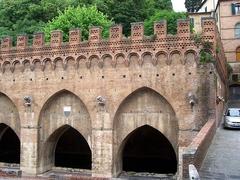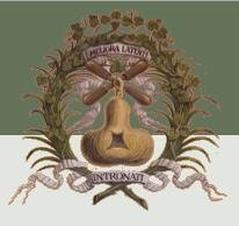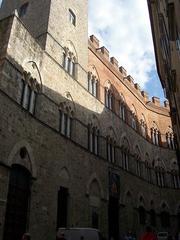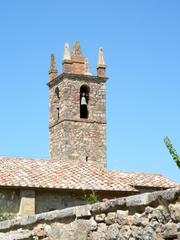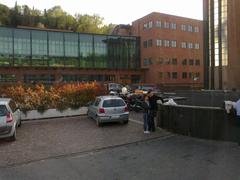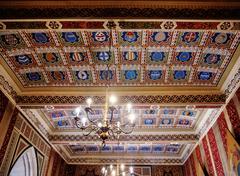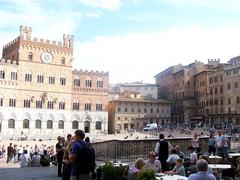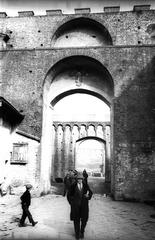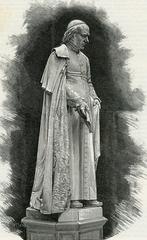
Visiting Fontebranda: Hours, Tickets, and Historical Insights
Date: 18/08/2024
Introduction
Nestled in the heart of Siena, Italy, Fontebranda is more than just a medieval fountain; it is a historical marvel and a testament to Gothic architecture. This iconic site dates back to the 13th century and has been a crucial part of the city’s daily life, economic activities, and cultural heritage. Mentioned in Dante Alighieri’s ‘Inferno’ and closely associated with Saint Catherine of Siena, Fontebranda offers visitors a unique glimpse into Siena’s past. This guide provides a comprehensive overview of Fontebranda’s historical significance, architectural features, and practical visitor information. Whether you’re a history enthusiast or a casual traveler, Fontebranda is a must-visit landmark that encapsulates the essence of medieval Siena (Italy Guides, Lonely Planet).
Table of Contents
- Introduction
- Historical Background
- Functional Significance
- Economic Impact
- Religious and Cultural Significance
- Restoration and Preservation
- Fontebranda in Literature and Art
- Visitor Information
- Nearby Attractions
- FAQ
- Conclusion
Historical Background
Origins and Early History
The Fountain of Fontebranda, located in Siena, Italy, is one of the city’s most ancient and significant landmarks. Its origins date back to the 13th century, specifically to the year 1246 when it was rebuilt under the auspices of the Sienese government. The fountain’s historical significance is underscored by its mention in Dante Alighieri’s “Inferno,” part of his epic poem “The Divine Comedy,” where it is cited in the thirtieth canto (Italy Guides).
Architectural Features
Fontebranda is renowned for its distinctive Gothic architectural style, characterized by three wide arches and crenellations. The fountain’s design includes water jets in the form of stone lions, which were a common motif in medieval Sienese architecture. The structure is fed by an intricate underground aqueduct system known as the “bottini,” which was a marvel of medieval engineering (Lonely Planet).
Functional Significance
Historically, Fontebranda played a crucial role in the daily life of Siena. It was the largest and most water-rich fountain in the city, serving multiple purposes. The fountain was divided into three basins, each serving a different function. The first basin provided drinking water for the city’s inhabitants. The second basin, which is now buried, was used for watering animals. The third basin was designated for washing clothes (Italy Guides).
Economic Impact
Fontebranda was not just a source of water but also a significant economic asset for Siena. The abundant water supply facilitated the operation of mills and supported various industries, including tanning and dyeing. These industries were vital to the city’s economy, particularly the Art of Wool, which was a major trade in medieval Siena (Italy Guides).
Religious and Cultural Significance
The fountain is also closely linked to the life of Saint Catherine of Siena, one of the city’s most revered figures. Saint Catherine, born in 1347, lived near Fontebranda, and the fountain is often associated with her early life and spiritual journey. This connection adds a layer of religious significance to the site, making it a place of pilgrimage for many visitors (Lonely Planet).
Restoration and Preservation
Over the centuries, Fontebranda has undergone several restorations to preserve its historical and architectural integrity. The most notable restoration took place in the 19th century, aimed at maintaining the fountain’s original Gothic features. These efforts have ensured that Fontebranda remains a well-preserved example of medieval Sienese architecture and engineering (Italy Guides).
Fontebranda in Literature and Art
Fontebranda’s historical and cultural significance has made it a subject of interest in various literary and artistic works. Apart from Dante’s “Inferno,” the fountain has been depicted in numerous paintings and writings, capturing its essence and importance in Sienese history. These artistic representations have contributed to the fountain’s enduring legacy and its recognition as a symbol of Siena’s rich cultural heritage (Italy Guides).
Visitor Information
Visiting Hours and Tickets
Fontebranda is open to the public throughout the year. However, visiting hours may vary depending on the season and local events. It is advisable to check the official Siena tourism website or contact local information centers for the most up-to-date visiting hours. As of the latest information, there is no entrance fee to visit Fontebranda, making it an accessible attraction for all visitors.
Accessibility
The site is generally accessible to visitors of all ages. However, the area surrounding the fountain includes some uneven surfaces and steps, which may pose challenges for those with mobility issues. Visitors are encouraged to wear comfortable footwear and take necessary precautions.
Travel Tips
- Best Time to Visit: Early morning or late afternoon for fewer crowds and better lighting for photography.
- Guided Tours: Consider joining a guided tour to gain deeper insights into the history and significance of Fontebranda.
- Nearby Amenities: Restrooms, cafes, and shops are available within walking distance.
Nearby Attractions
Visitors to Fontebranda can also explore several nearby attractions that offer a deeper insight into Siena’s history and culture. The Basilica of San Domenico, located just 0.08 miles away, is a significant religious site where Saint Catherine was welcomed into the Dominican order. The Casa Santuario di Santa Caterina, situated 0.07 miles from the fountain, is another important site associated with the life of Saint Catherine. Additionally, the Duomo, Museo Civico, and Piazza del Campo are all within walking distance, providing a comprehensive experience of Siena’s historical and cultural landscape (Lonely Planet).
FAQ
Q: What are the opening hours of Fontebranda?
A: Fontebranda is generally open throughout the year, but visiting hours may vary. Check the official Siena tourism website for current information.
Q: Is there an entrance fee to visit Fontebranda?
A: No, there is no entrance fee to visit Fontebranda.
Q: Are there guided tours available?
A: Yes, guided tours are available and highly recommended for a deeper understanding of the site’s history and significance.
Q: What are some nearby attractions?
A: Nearby attractions include the Basilica of San Domenico, Casa Santuario di Santa Caterina, the Duomo, Museo Civico, and Piazza del Campo.
Conclusion
The Fountain of Fontebranda stands as a testament to Siena’s rich historical and cultural heritage. Its architectural beauty, functional significance, and association with Saint Catherine of Siena make it a landmark of immense historical value. Continuous preservation efforts have ensured that Fontebranda remains a well-preserved example of medieval Sienese architecture and engineering. Today, it continues to attract tourists and history enthusiasts, offering a window into the past and a deeper understanding of Siena’s enduring legacy (Italy Guides, Lonely Planet).
References
- Italy Guides. (n.d.). Fountain of Fontebranda. Retrieved August 18, 2024, from Italy Guides
- Lonely Planet. (n.d.). Fontebranda. Retrieved August 18, 2024, from Lonely Planet
- Visit Siena Official. (n.d.). Fontebranda. Retrieved August 18, 2024, from Visit Siena Official
- Italy Scapes. (n.d.). Fontebranda. Retrieved August 18, 2024, from Italy Scapes
- Holidify. (n.d.). Fontebranda, Siena. Retrieved August 18, 2024, from Holidify
